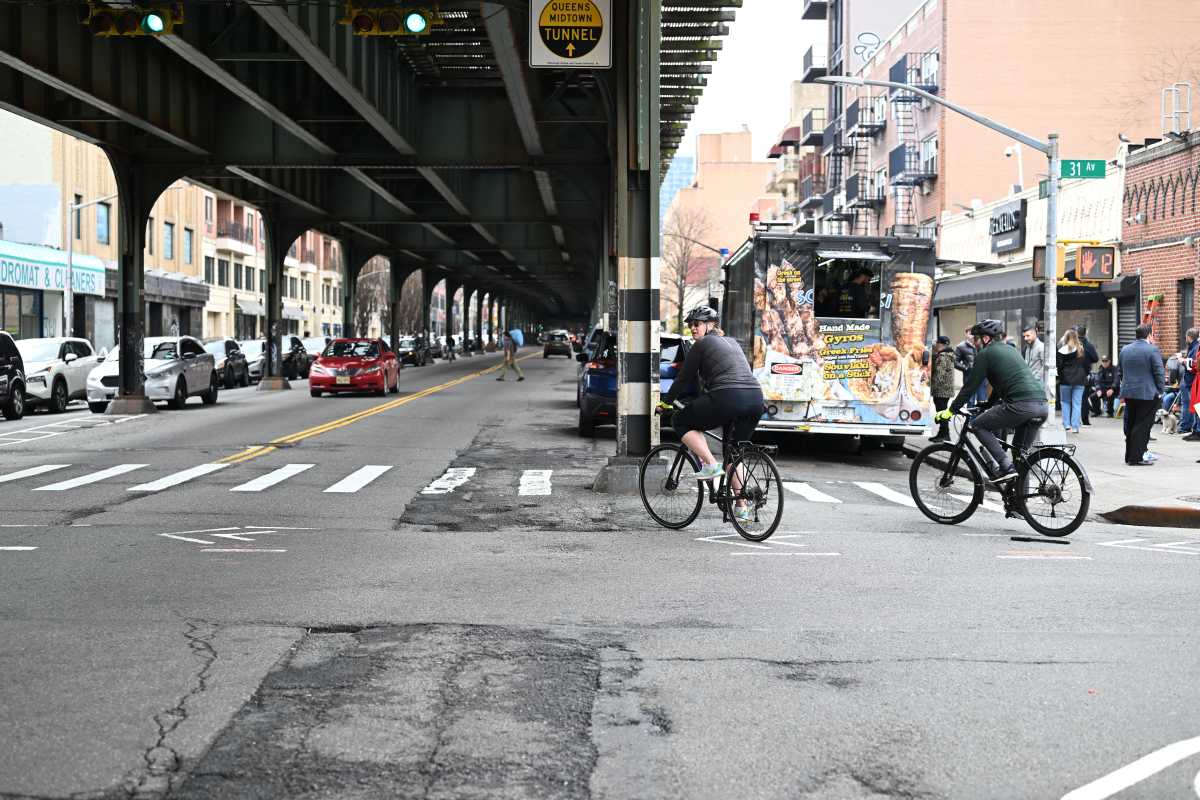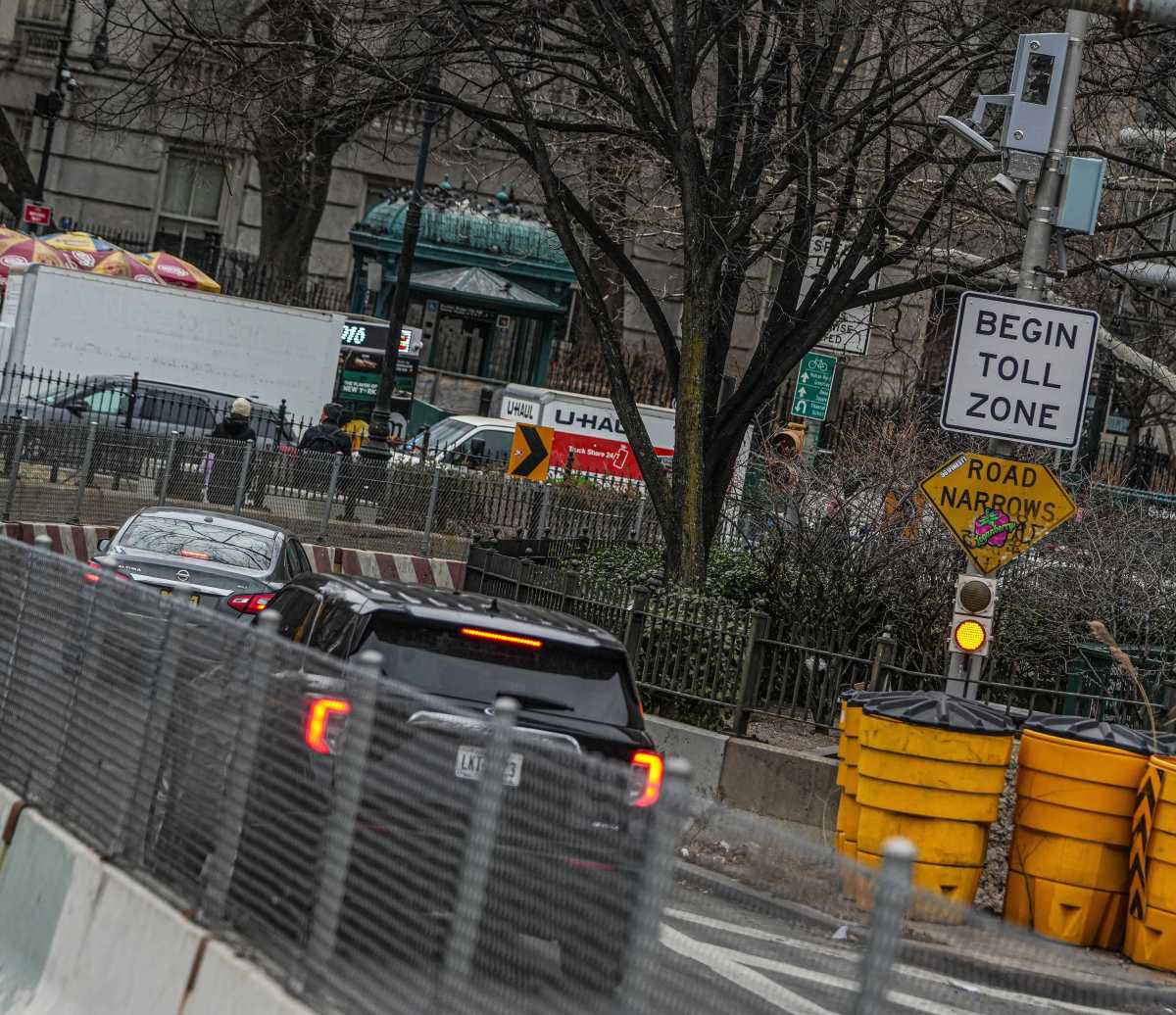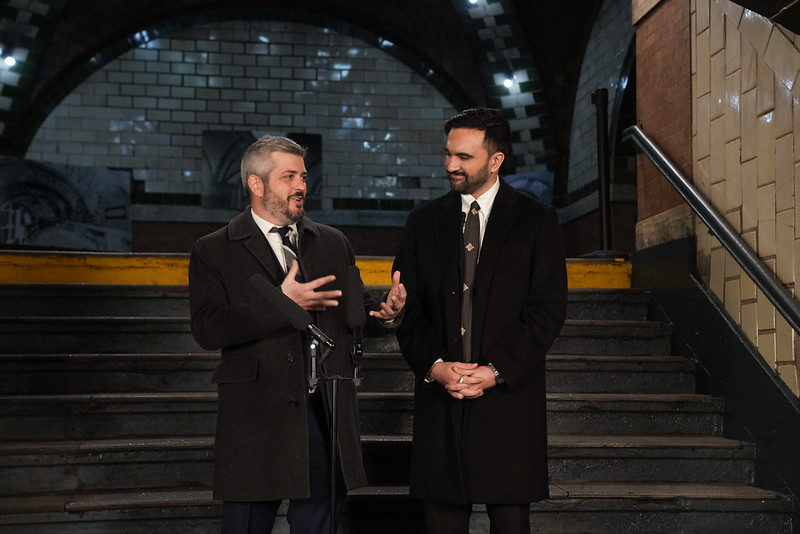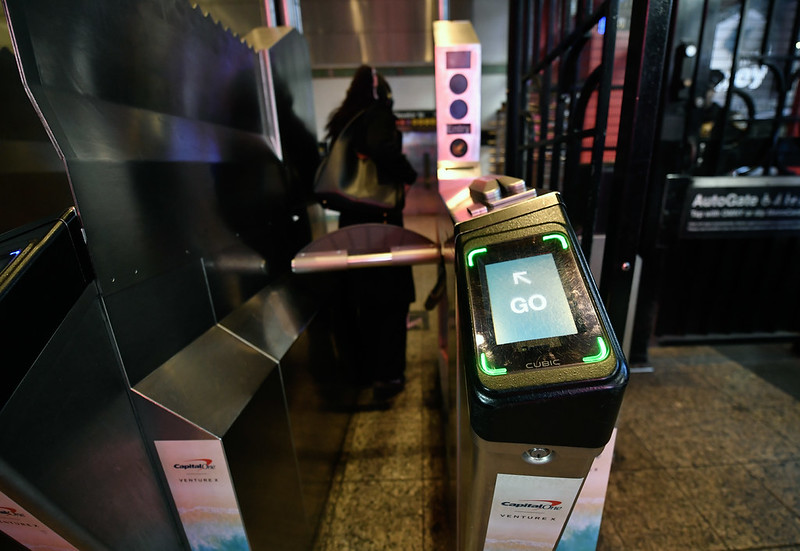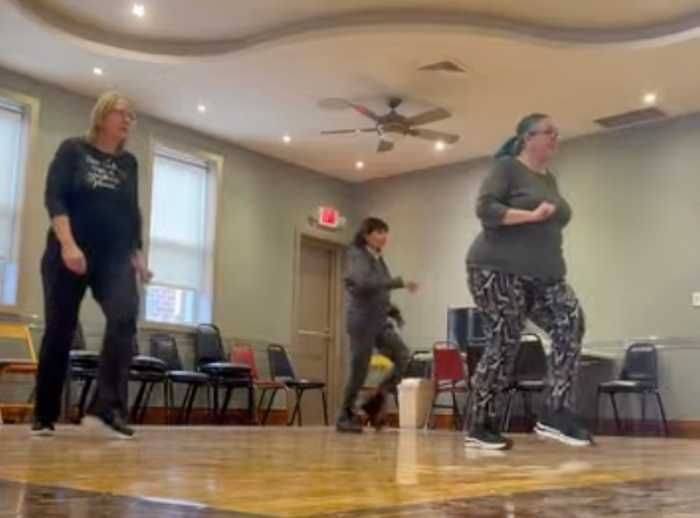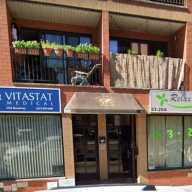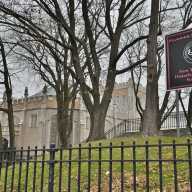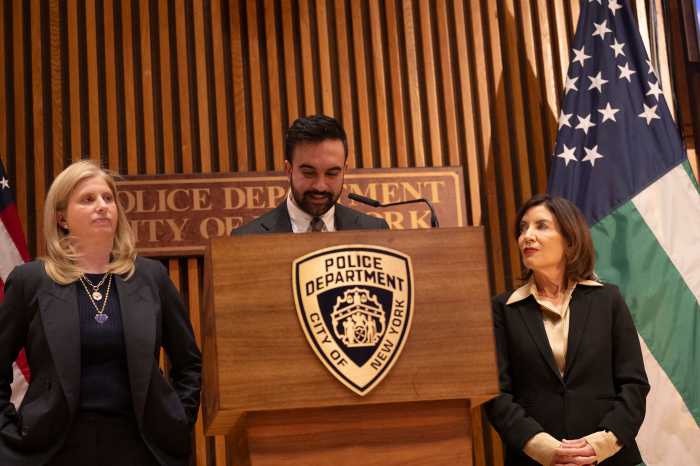The New York State Supreme Court has issued a temporary injunction against the Department of Transportation’s (DOT) planned protected bike lane under the elevated N/W subway tracks on 31st Street following a legal challenge from a coalition of local businesses.
The court has ordered the DOT to show cause after a legal challenge filed by the 31st Street Business Association alleged that the proposed bike lanes would compromise public safety, negatively impact local businesses and violate city laws.
The temporary injunction, granted on Aug. 13, prevents the DOT from installing the bike lanes before a show cause hearing set for Sept. 22.
Joseph Mirabella, an Astoria resident and the President of the 31st Street Business Association, welcomed the injunction, stating that the ruling showcases that the association’s case has “merit.”
Mirabella said the association’s end goal is not to prevent the DOT from installing protected bike lanes in Astoria but said the group is calling for the bike lanes to be installed on a residential corridor such as 33rd Street, where there is less traffic and less store fronts than the 31st Street corridor. He also stated that the 31st Street corridor has significant visibility issues due to the overhead tracks.
“It’s mind-boggling that they (the DOT) have come back with arguably the worst street to put this on,” Mirabella said.
The business association launched an online petition opposing the installation of bike lanes along 31st Street in April, receiving more than 4,500 signatures. A rival petition supporting the bike lanes has received roughly 3,500 signatures, underscoring the divisive nature of the issue.
The DOT proposal would reduce the width of 31st Street’s moving lanes and parking lanes by three feet and five feet, respectively, in order to make room for the eight-feet-wide protected bike lanes. Advocates say the proposal would significantly improve safety for cyclists along the mile-long stretch covered by the plan, which covers both sides of 31st Street from 36th Avenue to Newtown Avenue.
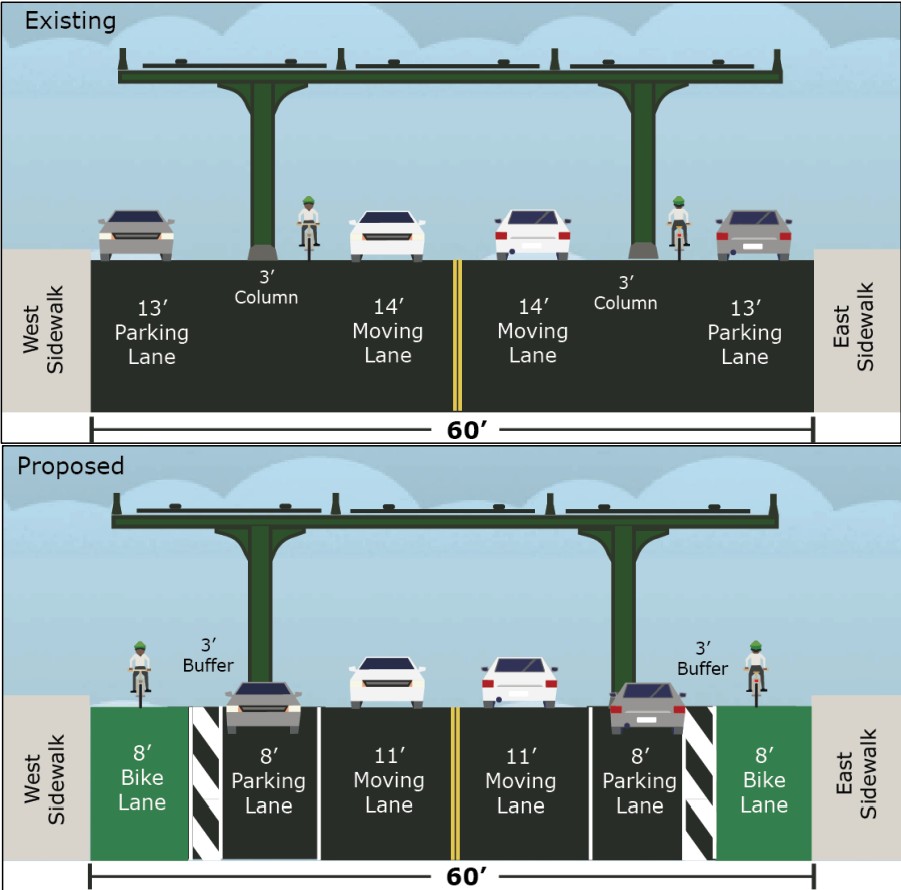
The DOT also plans to add painted pedestrian islands at intersections to shorten pedestrian crossing distances and prevent motorists from cutting corners. The plan additionally bans parking at corners to boost visibility.
Supporters of the DOT plan argue that protected bike lanes are essential for improving safety along 31st Street, citing two traffic fatalities and 11 serious injuries reported on the corridor between 2020 and 2024.
The mile-long stretch of 31st Street—where the protected bike lanes would be installed—is among the most dangerous roads in Queens, according to DOT data, with a total of 178 injuries recorded on the corridor over the four-year period. DOT data cites “multiple instances” of cyclists getting “doored” – referring to when a cyclist collides with a car door that has been opened– while over 30% of pedestrian injuries have been caused by left-turn crashes.
Ben Furnas, executive director of non-profit Transportation Alternatives, said the redesign would help make a dangerous stretch of Astoria safer for all road users, adding that the Supreme Court injunction puts families in “harm’s way.”
“This injunction puts Queens families in harm’s way,” Furnas said in a statement. “The 31st Street redesign was created to protect people from dangerous traffic in a corridor with a long history of crashes. Just this week, three people were killed in Astoria when a driver slammed into a coffee truck. Blocking this safety project means more Astoria families remain unprotected, and that’s unacceptable. We will do everything in our power to fight for New Yorkers who bike, walk, and use this corridor every day.”
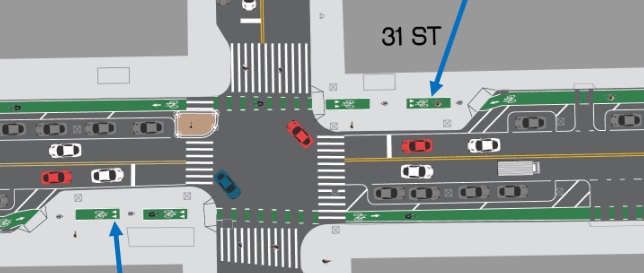
However, the 31st Street Business Association argues that the proposed bike lanes would negatively impact local businesses while creating new safety issues by installing bike lanes through loading and delivery zones along 31st Street.
Mirabella said there are “serious” visibility issues along 31st Street due to the elevated tracks and insists that it is a bad idea to encourage cyclists to use the corridor. Instead, Mirabella believes that the DOT should focus its energy on installing bike lanes on 33rd Street or another similar corridor that does not have overhead subway tracks.
“We support cycling infrastructure,” Mirabella said. “But given the nature of 31st Street with the amount of commercial loading zones and the subway running overhead, it makes no sense to do this here.”
Mirabella noted that a number of businesses along the stretch of 31st Street covered by the plan are commercial or light industrial businesses that rely on loading zones along the side of the corridor to receive deliveries and load goods. He said many deliveries can weigh hundreds of pounds, stating that the bike lanes could prove to be an impediment to businesses located along the corridor.
He also alleged that the bike lanes could create safety issues for cyclists and delivery drivers.
“God forbid, there’s an incident where where a cyclist or somebody on an e-scooter is injured, or a delivery person or workers are injured because of this.”
Panos Adamopoulos of Pilates Designs, LLC at 35-17 31st St. said the proposed bike lanes would force him to close down by making it more difficult to take deliveries and for customers to visit his store.
Adamopolous described himself as a long-time cyclist who supports cycling infrastructure but insisted that 31st Street was not an ideal location for a protected bike lane, noting that the corridor is heavily used by motorists and acts as a route between two major bridges — the Queensboro Bridge and the Triborough Bridge.
Like Mirabella, Adamopolous believes that the protected bike lane should be housed on a quieter street such as 33rd Street.
Adamopolous further contended that the two fatalities referenced by the DOT were motorcycle collisions and argued that protected bike lanes would not have prevented either incident from taking place.
Adamopolous and other business owners alleged that they have received a barrage of one-star reviews since voicing their opposition to the 31st Street bike lanes, alleging that supporters of the bike lanes have also harassed them with numerous phone calls.
“This has to stop,” Adamopolous said. “They’re giving one-star reviews to every business suing the DOT.”
Bob Battipaglia of Grand Wine at 30-05 31st St. told a similar story and voiced concerns about pedestrians and delivery drivers walking across bike lanes to visit local businesses.
“I don’t see how that could be a safe situation with all that commerce on the corridor,” Battipaglia said.
The DOT, meanwhile, pushed back strongly and said the agency is committed to delivery a safer, more equitable experience for everyone using 31st Street.
An agency spokesperson also said the DOT has heard the concerns of 52 different businesses along 31st Street and incorporated those concerns into an updated design for the protected bike lanes. The updated plans include the addition of truck loading zones between 7 a.m. and 7 p.m. to facilitate deliveries as well as the expansion of metered parking to increase turnover and improve parking access along the corridor.
The spokesperson added that the agency looks forward to defending the proposal in court.
“This redesign of 31st Street — a corridor with a high number of serious and fatal crashes — addresses critical safety needs by better organizing traffic and improving visibility, all while keeping vehicles moving,” a DOT spokesperson said in a statement. “As with any street redesign, DOT requires input from all members of the community who may be affected. That’s why we’ve engaged with 52 different businesses within project limits, and 90% provided feedback that has been thoughtfully incorporated into the updated redesign. This project utilizes common design elements found on streets across the city that comply with local law and ADA regulations. We stand firmly behind this project and will defend our work in court.”
However, local business owners disputed that statement, accusing the DOT of developing the proposal and then seeking input from the local community, rather than working with the community to develop the proposal.
“They basically just shoved it down our throats without allowing us to have a reasonable chance for opposition,” Battipaglia said. “It was never really a back and forth discussion.”
Adamopolous, meanwhile, accused the DOT of “going behind the backs” of business owners along 31st Street.
“We were misled. We were deceived,” Adamopolous said.
Mirabella said the 31st Street Business Association has repeatedly called on the DOT to make 31st Street safer by reducing the speed limit to 20 miles per hour, installing speed cameras and installing more lighting on the corridor. However, he said the agency has not responded to their requests.
The DOT previously told this publication that the protected bike lanes are a direct result of the Western Queens Street Safety Plan developed by local elected officials.
DOT officials previously pointed to the results of another bike lane project in western Queens.
The DOT said that it found that businesses on Skillman Avenue in Sunnyside, where protected bike lanes were installed, reported a 12% increase in sales revenue along the corridor. They also noted studies stating that protected bike lanes reduce deaths and injuries for all road users by 16.1%, for pedestrians by 29.2%, and for senior-aged pedestrians by 39%.

